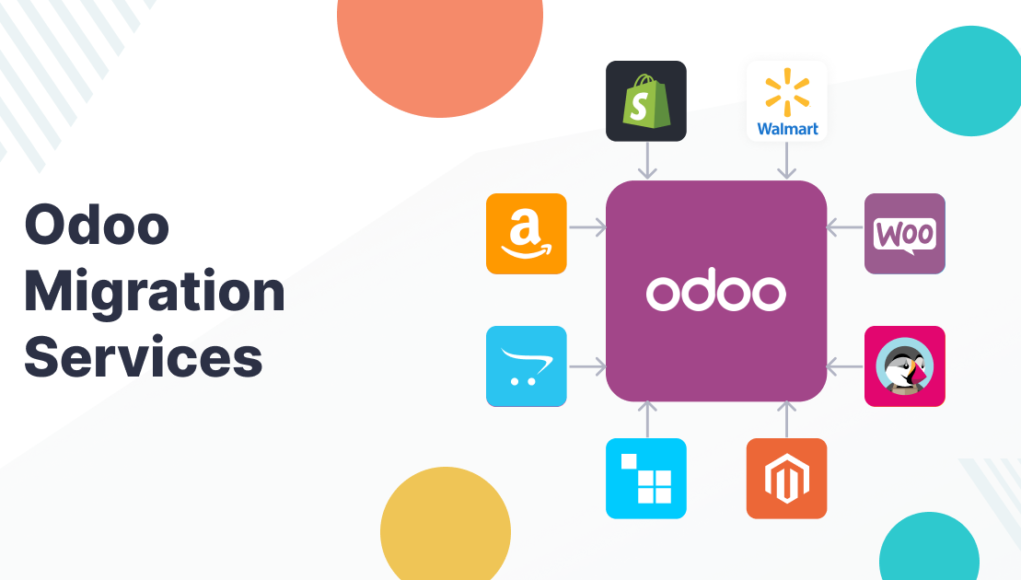Migrating to Odoo, whether from another ERP system or from an older version of Odoo, can be a transformative step for your business. Odoo is a powerful and flexible enterprise resource planning (ERP) system that can significantly streamline your operations, enhance efficiency, and improve decision-making. However, the process of migrating to Odoo requires careful planning, attention to detail, and adherence to best practices to ensure that the transition is smooth and successful.
This guide will walk you through the key steps in Odoo migration services in USA, highlighting the best practices to follow and how to integrate Odoo implementation effectively during the migration process.
1. Assess Your Current System and Define Objectives
Before beginning the migration, it is crucial to evaluate your existing systems and processes. Whether you are migrating from another ERP, custom software, or even spreadsheets, understanding the current workflow is essential for a smooth transition.
Define clear objectives for the migration:
- Are you looking to upgrade your current Odoo version?
- Do you need to integrate new modules or functionalities?
- Are you switching from another ERP to Odoo?
Identifying your business needs and goals for migration will guide your decisions throughout the process.
2. Choose the Right Odoo Version
Odoo is available in two versions: Odoo Community (open-source) and Odoo Enterprise (paid). Both versions offer powerful features, but Odoo Enterprise comes with additional features and support.
When migrating, you need to decide which version aligns best with your business requirements. The right choice will depend on factors such as:
- The size and complexity of your business
- The need for advanced features such as payroll, accounting, and project management
- Budget considerations
If you are upgrading from an older version of Odoo, assess the new features available in the latest version to ensure they align with your needs.
3. Plan Your Odoo Implementation
An Odoo implementation services in USA is a crucial step during migration, especially if you are migrating from another system. During implementation, you will configure Odoo to suit your specific business processes, including modules for sales, inventory, manufacturing, accounting, CRM, and more.
At this stage, you should:
- Map out your current business processes to identify inefficiencies
- Define workflows and determine the best way to configure Odoo modules
- Set up user roles, permissions, and access control
Proper Odoo implementation ensures that the system works according to your needs, optimizing workflows and improving overall productivity. Whether you choose to carry out the implementation yourself or hire an Odoo expert, a well-executed implementation will greatly impact the success of your migration.
4. Data Migration and Testing
Data migration is one of the most critical steps in the Odoo migration process. You will need to move data from your legacy system or older Odoo version into the new system, ensuring that it is clean, accurate, and formatted correctly.
Key data to migrate include:
- Customer information
- Supplier data
- Product and inventory details
- Financial records
- Sales orders and invoices
Data migration should be done in stages, with thorough testing at each phase to ensure that everything has transferred correctly. You will also need to verify the data integrity and make any necessary adjustments. It’s recommended to use automated migration tools or scripts for efficiency, but manual validation and testing are essential for accuracy.
5. User Training and Adoption
One of the biggest challenges during migration is ensuring that your team adopts the new system smoothly. Providing proper user training is essential to help employees become familiar with Odoo’s interface and features.
Make sure to:
- Train your team on the key functionalities they will be using
- Create documentation or training guides for reference
- Offer hands-on training sessions and encourage practice in the new system
This will help minimize disruptions to daily operations and increase the overall effectiveness of your Odoo implementation. The success of any ERP migration depends on how well your team adopts the new system.
6. Go Live and Post-Migration Support
Once all the migration tasks are complete, it’s time to go live with Odoo. During this phase, ensure that your team is fully prepared and that all systems are functioning correctly. It’s essential to have a post-go-live support plan in place to address any issues that may arise in the first few weeks after the migration.
Monitor performance closely and address any user concerns promptly. Having an expert or Odoo consultant available to troubleshoot and provide guidance will make the transition smoother.
7. Continuous Improvement and Updates
Odoo is an evolving platform, with regular updates and new features being released. After the migration, it’s important to continue refining the system and upgrading it as needed. Regular updates will ensure your business continues to benefit from the latest features and security patches.
In addition, continuously analyze your business processes and identify opportunities for optimization. Odoo offers flexibility to scale with your business, allowing for continuous improvement.
Conclusion
Odoo migration is a significant undertaking, but when approached with the right strategy and best practices, it can offer great rewards in terms of efficiency, productivity, and overall business performance. By carefully assessing your current system, planning a proper Odoo implementation, migrating data efficiently, training users, and providing post-go-live support, you will set your business up for success in the Odoo ecosystem.










